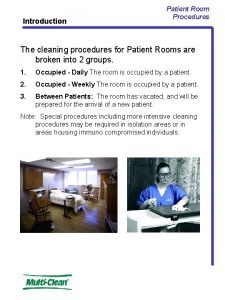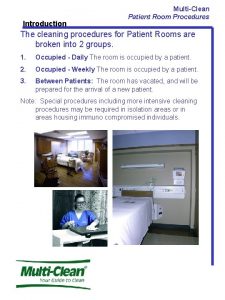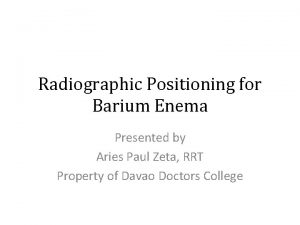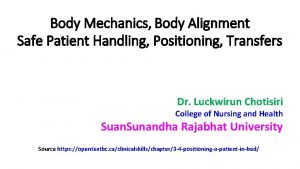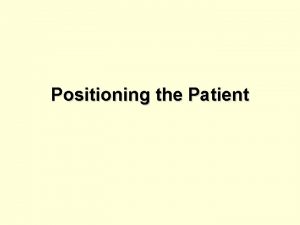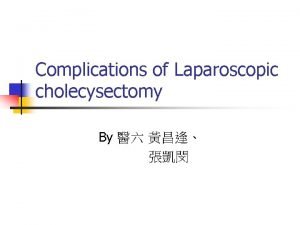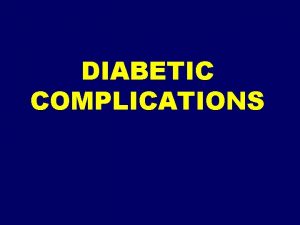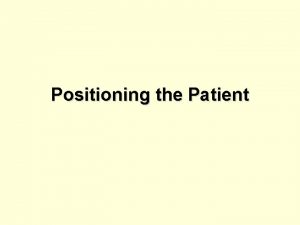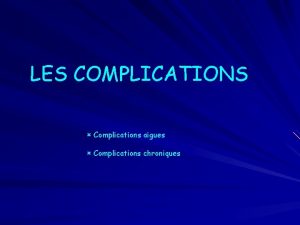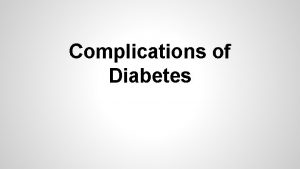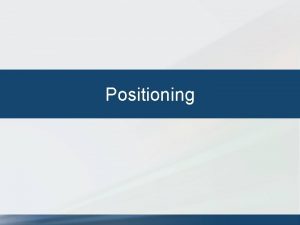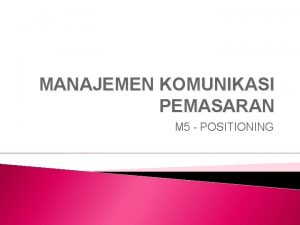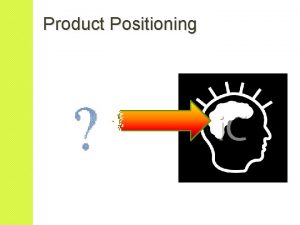Patient Positioning Complications Related to Neurosurgical Procedures A










- Slides: 10

Patient Positioning Complications Related to Neurosurgical Procedures: A Systematic Review Thomas Frank, Yoshua Esquenazi and Arthur L Day Vivian L. Smith Department of Neurosurgery University of Texas Medical School at Houston, USA

Introduction v Although rare, complications related to patient positioning during neurosurgical procedures may occur. v Long procedures are common in neurosurgery and require knowledge of potential patient positioning complications. v Acknowledging these complications, often presenting postoperatively, enables early recognition and prompt treatment.

Methods v We performed a “Pubmed” literature search for English studies that reported a complication related to positioning in a neurosurgical procedure. Results are numbers of studies reporting complications were analyzed. v Search criteria: (Neurosurgery OR neurological surgery OR craniotomy OR spine surgery OR spinal surgery OR anesthesia) AND (complication OR problem) AND (position) AND (“variable”). v “Variable” referred to “(head or neck) ‘rotation’, ‘flexion’, ‘hyperflexion’, ‘hyperextension’, or ‘lateral flexion’”, body positions such as “supine”, “lawnchair”, “trendelenburg”, “lateral”, “park-bench”, “prone”, “sitting”, and various equipment.

Results Overview Number of studies reporting complications for each position Prone Head/Neck Position (n=117) 36% 6% Equipment 6% Lateral 8% Supine 10% Sitting 34% v Complications were subject to confounding and publication bias, and some reported cases most likely were omitted by not fitting the search criteria. v Although complications were rare, each position had a characteristic complication and a few very rare outcomes. A complication can be related to multiple positions.

Head/Neck Positions and Complications Position Complication Head/Neck Rotation • 1 Parotitis • 1 SSEP changes Head/Neck Flexion • • • Head/Neck Hyperflexion • 2 Quadriplegia Head/Neck Lateral Flexion • 1 SSEP changes 2 Macroglossia 1 Parotitis 1 Bilateral recurrent laryngeal nerve paralysis 1 SSEP changes 1 Spinal cord infarction

Supine Positions and Complications Position Complication Supine • • Trendelenburg • 1 Severe hypotension • 1 Cerebral herniation 5 Venous air embolism (VAE) 2 Tension pneumocephalus 2 Remote cerebellar hemorrhage (RCH) 1 Cerebral herniation 1 Retinal artery occlusion 1 Bilateral recurrent laryngeal nerve paralysis 1 Blindness

Lateral Positions and Complications Position Complication Lateral • • • Park Bench • 1 Pneumocephalus • 1 Long thoracic nerve injury • 1 Macroglossia 2 Perioperative ischemic optic neuropathy (PION) 2 Tension pneumocephalus 1 Discitis 1 Long thoracic nerve paralysis 1 Rhabdomyolysis 1 Parotitis

Prone Positions and Complications Position Complication Prone Kneeling • • • • 10 visual loss (bilateral & unilateral) 4 (PION) 3 Paraplegeia 2 Retinal artery occlusion 2 ischemic orbital compartment syndrome 2 Acute glaucoma 2 Meralgia paresthetica 2 Macroglossia 1 Anterior thigh compartment syndrome 1 Avascular necrosis of femoral head 1 Thoracic outlet syndrome 1 Coronary vasospasm 1 Hepatic infarction • 1 Anterior thigh compartment syndrome • • • • 1 Rhabdomyolysis 1 Quadraplegia 1 Atlanto axial dislocation 1 Intracerebral hemorrhage 1 RCH 1 Thrombo emoblic event 1 subconjuctival hemorrhage 1 shoulder dislocation 1 Lost monitored potentials 1 Bilateral occipital lobe infarct 1 Bifrontal epidural hematoma 1 Prolonghed hypotension 1 Acute mesenteric ischemia 1 Brachial plexopathy

Sitting Positions and Equipment Complications Position Complication Sitting • • • 9 Venous air embolism (VAE) 9 Tension pneumocephalus 3 Macroglossia 3 Quadr. Iplegia 3 SSEP changes 2 Sciatic neuropathy • • • Headrest • 2 Blindness Wilson Frame • 1 Visual Loss Jackson Table • Relton-Hall Frame • 1 Central cord syndrome 1 Supratentorial hematoma 1 Parotitis • • • 2 Tension pnuemoventricle • 2 Spinal cord infarction • 2 Supratentorial • hemorrhage 1 Lateral rectus palsy 1 Anosmia 1 Pyriformis syndrome • 1 Acute glaucoma • 1 Atlanto axial dislocation 1 Rhabdomyolysis • 1 Abducens nerve palsy 1 Brachial plexopathy • 1 Meralgia paresthetica

Conclusions v Neurosurgery patient positioning complications are rare, but surgeons should appreciate their possibilities in order to recognize and treat them swiftly. v Most of these complications can be prevented and permanent manifestations avoided if treated immediately. v The surgeon should appreciate the intricacies of various positions and be involved in the positioning of patients at the start of surgery.
 Hospital patient room cleaning procedures
Hospital patient room cleaning procedures Hospital patient room cleaning procedures
Hospital patient room cleaning procedures Position used in nursing patient
Position used in nursing patient Positioning for enema
Positioning for enema Dorsal recumbent position
Dorsal recumbent position Dorsal recumbent position
Dorsal recumbent position Example of skill-related fitness
Example of skill-related fitness Two types of fitness components
Two types of fitness components Patient 2 patient
Patient 2 patient Abdominal insufflation complications
Abdominal insufflation complications Blood transfusion indications
Blood transfusion indications
